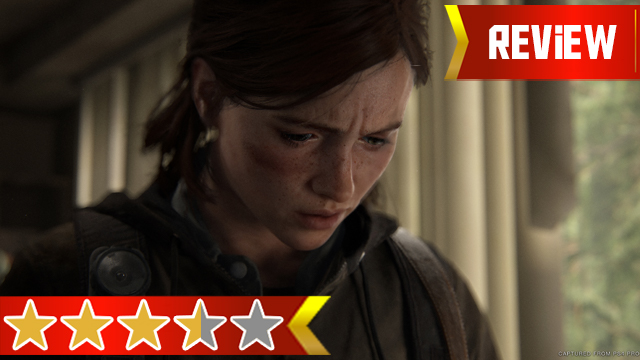The Last of Us’ ending was so sacred that just the mere idea of a sequel seems sacrilegious. Ambiguity as poetic as that is woefully uncommon and a follow-up could easily dismantle that purity. Instead of letting naughty dogs lie, developer Naughty Dog decided to make the inconclusive ending more conclusive with The Last of Us 2. This remarkably ambitious sequel shares some of the qualities of its predecessor, but, much like a host fighting a fungal infection, that same ambition has also taken over and turned the game into a shambling husk of its former self.
ALSO: China gets The Last of Us 2 credit card — but the game isn’t likely to launch there
Endure and survive
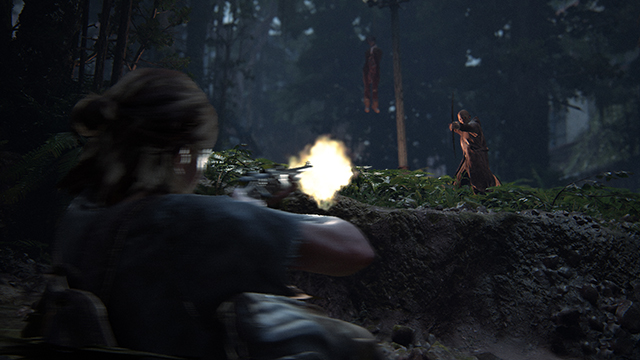
It does take a while for the fungal infection to hit its peak as The Last of Us 2 pushes forward in addition to stumbling backwards. Combat holds most of this advancing momentum since many of its intricacies have been appropriately tuned to add to its tension without diminishing any of its established tenets.
Those foundational bricks haven’t been dramatically rearranged but thoughtfully reinforced. Skirmishes still rely heavily on hide-and-seek strategies that give players plenty of ways to experiment and think tactically. Sneaking yields many options — some peaceful, others brutal — as you crawl around and eliminate or completely avoid the scores of foes that hunt you down. The open, circular level design and basic set of distraction and offensive stealth tools let you pick either path, too.
Of course, these sneaky mechanics sit alongside traditional third-person shooting but falling somewhere in the middle between stealth and loud firefights is where The Last of Us has always made its mark. Aware and unpredictable enemies ensure that almost no plan goes off without a hitch, forcing you to improvise for your survival. Hurriedly chucking a brick at a nearby WLF soldier to safely get away or setting the perfect mine with your final bit of explosive material is a rush as you use your greater wits to match their greater numbers — a nail-biting thrill that only climbs as the difficulty does.
And even though they are quite intelligent, calling out your specific location and flanking you every chance they get, they’re also not omnipotent gods like most other video game foes. They’ll lose you and are susceptible to traps; a realistic touch that allows for such an engaging fluidity between stealth and aggressive gunplay. The impulsive infected aren’t quite as cerebral and are more chaotic yet utilize the same strengths as the human fights without being a carbon copy of them.
Arenas are also full of multiple rooms, buildings, and paths and when combined with the breadth of the weapons and aforementioned lively AI, fights are destined to play out differently each time and have unique hotspots. The powder keg of unique components is prime for player-generated stories as each of its disparate elements clash in a near infinite amount of ways.
New tools and threats
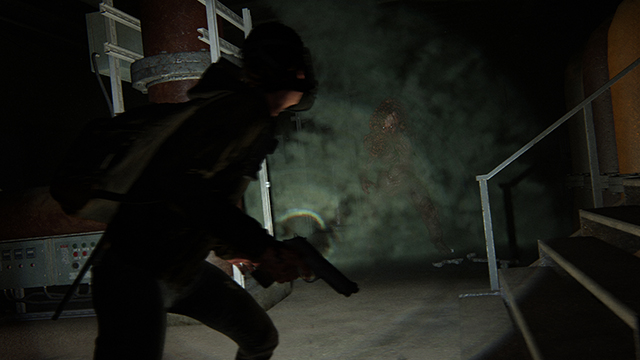
All of that has been carried over from the first game almost to a fault as familiarity can occasionally begin to rear its ugly, fungus-ridden head, yet its ability to slightly improve upon that unrivaled foundation acts as a cure for complete stagnation. Being able to go prone and slither around like a snake (or Snake) opens new places to hide from eyeballs and gunfire; a simple ability with two practical uses. Dodging is similarly a multi-use addition since it inherently makes melee scuffles less mashy and lets you evade a lunging Clicker or Bloater charge with relative ease, granted you can react in time.
The Last of Us 2 sadly doesn’t have many new enemy types as it is boxed in by lore that already depicts the complete birth-to-death cycle of the infected. But the two main new additions do fit well into the established roster.
Dogs keep you moving during stealth since they can sniff you out and can quickly hone in on you like furry homing missiles during alert phases. Shamblers are a mix of Bloaters and Clickers, striking an unoccupied middle ground between the two advanced mushroom monsters. In an otherwise almost identical lineup of enemies, both do a solid enough job of adding just one more factor to the already long list of systems that bounce off each other and make the combat so personal and rewarding.
The absurd amount of customization makes the experience even more personal. Few, if any, games have as wide of an array of knobs and levers that let you fine-tune almost every moving part. While most of it is centralized around addressing different types of accessibility, this also carries over to the difficulty.
Each pillar of the game from enemy damage, awareness, level of resources, and player health can be managed independently, letting players discover the type of experience they want the game to be. From players who want to make the stealth a tad easier to those who want to have more legible fonts, The Last of Us 2 is an empowering experience for almost every possible type of player because of these extensive options.
A long, long, long road to travel
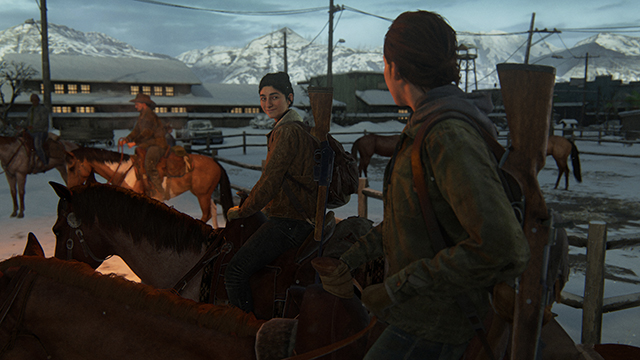
None of these toggles can change the story, which is where the game takes its biggest swings and, subsequently, its biggest whiffs. The Last of Us 2 opts to tell a much longer and more complicated tale with a multitude of heavy themes that cover cyclical violence, the follies of revenge, how enemies are perceived and dehumanized, and more.
Naughty Dog matches these lofty ideas with gameplay and creates empathy through the controller, marrying the strengths of the medium to the narrative. That even extends to the enemies as they’ll call out Debra’s name as you launch an arrow into their eye socket or cry over Steve as you blow his legs off, further assigning personal touches to random, faceless grunts.
Conceptually, it’s an impressive feat. Interactivity is a strong method of bonding characters to the player and the studio’s remarkable attention to performances and animation help create a story with unparalleled production values. The money is on the screen and that never lets up over the 30 or so hours it takes to hit the end credits.
However, those 30 or so hours act as a near-fatal bite to the story’s neck and are why many of these ideas are only conceptually engaging. Naughty Dog is a studio that is compulsively (and sometimes destructively) obsessed with perfection, aiming to give ample time to each of its ideas to allow them to grow and develop. Each one needs buildup in order to get a rightfully earned finale.
But since there are so many threads, the game has to spend multiple hours building on every one of them in an attempt to tie each of those threads all into a satisfactory bow. The pacing takes a nail bat to the chest as it slogs through setup after setup after setup before it can even begin to get to any sort of payoff from the previously established beats. Reaching climaxes takes even longer as the dangerous and very lootable world encourages you to tiptoe through it, further delaying your narrative payoff as you scrounge for muddy rags and empty wine bottles.
The Past of Us
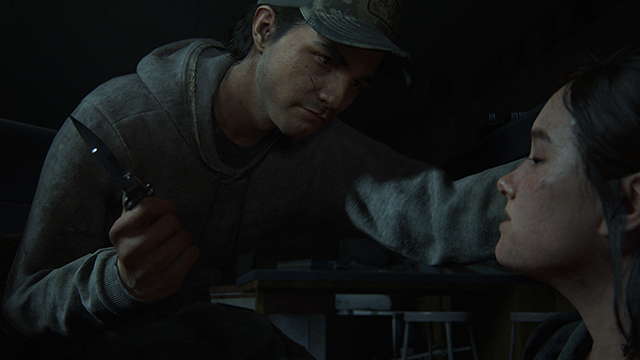
The Last of Us 2’s penchant for flashbacks is emblematic of these pacing issues. Both calm and intense scenes are frequently undercut by the urge to jump back and show how that moment happened as the flow is sacrificed by the constant urge for explanation. This happens repeatedly, too, and there are even flashbacks within flashbacks.
And when the game is trying to examine so many topics, these introductory bits and blasts from the past pile up and result in a story that has too much going on. This is a little ironic since the beginning often meanders between scenes and fills time with seemingly anticlimactic main objectives. Admirable intent can’t make up for the lack of focus since with every new theme, character, or faction, another explainer — be it multiple gameplay sections or a trip down memory lane — is required.
More story begets more introductory sequences which begets more story and so on. It’s like the ouroboros of storytelling, which is fitting because The Last of Us 2 feels similarly endless at times. Even the fantastic combat loop grows repetitive in much of the latter third since it, despite its core strengths and numerous upgrade paths, can’t endure and survive quite so many samey encounters.
This added complexity is peculiar when compared to how its predecessor was so beloved for its simplicity. Joel and Ellie’s journey was straightforward at its core and found its depth within the cast members and their growth. Simple story, complex characters, as Creative Director Neil Druckmann likes to say.
But this game has far too much story to be considered simple and too many people to meaningfully center in on. The Last of Us 2 confuses ambition for depth and drowns in those deep waters and doesn’t have the metaphorical wooden palette to safely traverse the waves.
Many of the new characters aren’t even as immediately interesting either and that’s an issue since the game wants you to intimately empathize with almost everyone. Ellie’s trauma isn’t meaningfully explored until later on and her potentially engrossing relationship with Dina takes up so little screen time. She’s also not as plucky as she once was, which means there are fewer avenues for lighthearted quips to balance out the all-encompassing dread.
Almost nobody else picks up that slack either. The new roster isn’t as endearing and lives in the shadows of Naughty Dog’s past iconic characters. None of them are outright unlikable yet few rise above anything more than well-animated and refreshingly diverse gluttons for punishment. The humanizing elements are there and the performances are nothing less than fantastic, but they lack the level of charm and personality that made characters like Tess, Bill, and Henry so memorable in the first game.
A beautiful, busted world
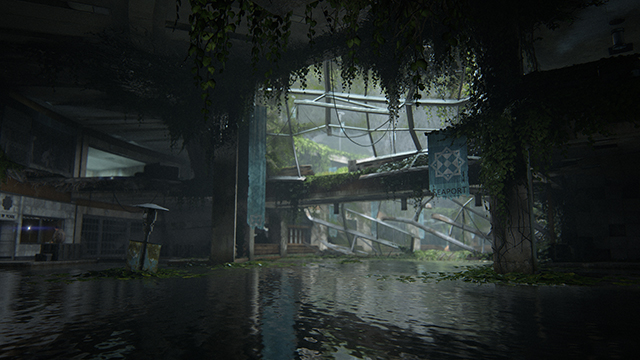
In addition to more story, The Last of Us 2 has more environments as well and even though they too can slightly buckle underneath the game’s girth, they never cease being exceptionally gorgeous and among the PS4’s finest on a technical and artistic level. Realistic lighting, a steady frame rate, and immersive lack of visible load times allow its broken down environments to shine in all of their destroyed beauty. Greenery, spores, or flooding overtaking a nearly extinct society isn’t as new at this point, but it has never looked as good as this.
Visual fidelity and a ridiculous attention to detail makes these places feel lived in in a way that surpasses the first title. Environmental storytelling is even stronger here as journals and collectibles paint a more vivid picture of those who have become Clicker chow. They’re small tales that reward vigilant, resource-hungry players who read each short note and demonstrate that the team is fully capable of telling brief yet effective stories.
Most even revolve around simple environmental puzzles, which are surprisingly natural and test your practical problem solving skills. They’re not about pushing boxes, but paying attention to the world in ways that don’t feel overtly video gamey. It’s more immersive and fits within the game’s grounded aesthetic.
Final verdict
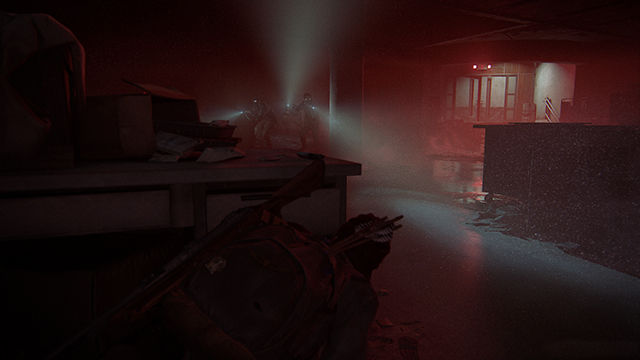
The Last of Us 2 is grounded enough to still contain plenty of traces of its former self. Its stealthy combat loop inspires frenetic yet tactical behavior through its smart enemy AI and resource management that is prime for compelling player-driven stories. The slick presentation and sheer visual fidelity are among the best on the PS4 as its characters and environments are elegantly detailed regardless of their apocalyptic backdrop.
However, the fungus spreads as the game progresses and is where it begins to lose its identity. The first half’s semi-aimless and methodical pacing drags in its latter half as it bites off more story than it can comfortably chew and then spends too many hours trying to flesh out each one of its many beats.
This excessive padding and theoretically noble attempt to dive into deeper subjects also negatively impacts the gameplay, too, as even its ace combat mechanics can’t quite stay fresh and exciting when repeated that often over the span of 30 hours. What’s left is a Bloater that’s forsaken enough of its soul to only just barely still be recognizable in its current form, shuffling around and proving that, unlike Ellie, it is not immune to devolving into a lesser form of itself.
GameRevolution reviewed The Last of Us 2 on PS4. Code provided by the publisher.
-
Tense combat mechanics encourage strategic play, resourcefulness, and improvisation.
-
Convincing animations, impressive visual fidelity, and awe-striking attention to detail make it one of the system’s best looking games.
-
Practical puzzles are satisfying to solve and open the door for more environmental storytelling.
-
A surprisingly welcome amount of accessibility and difficulty customization options.
-
New cast, with a few exceptions, is mostly unremarkable.
-
Story tries to do too much and goes on far longer than it should.
-
And that fluff also makes the gameplay grow repetitive, despite how solid the core is.
